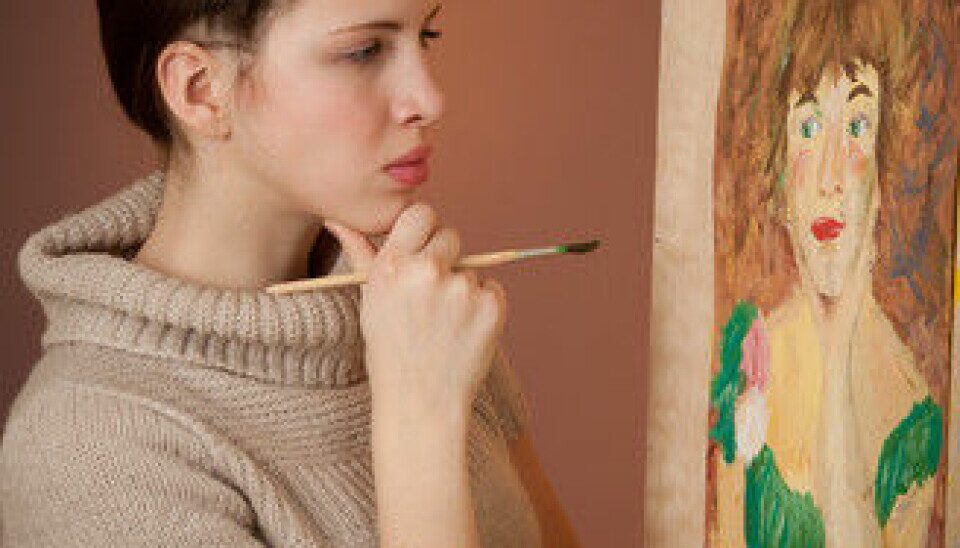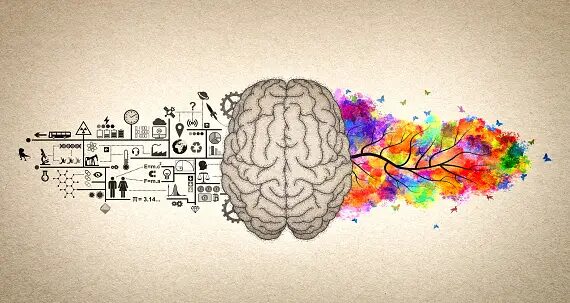
Have you ever gazed at a swirling Van Gogh masterpiece, its vibrant colors a stark contrast to the artist’s reported struggles with mental illness? Or perhaps you’ve been captivated by the hauntingly beautiful music of composers like Beethoven, who may have grappled with bipolar disorder. These examples, and countless others throughout history, raise a fascinating question: is there a link between creativity and mental illness?
The Allure of the Tortured Artist
The “tortured artist” trope is a persistent one. We romanticize the idea that suffering fuels artistic genius, that the depths of despair unlock a wellspring of creative expression. There’s a certain undeniable allure to this notion. After all, who hasn’t experienced a surge of inspiration during a period of emotional turmoil?
A Complex Dance: Mental Traits and Creative Expression
While the “tortured artist” narrative is captivating, the reality is far more nuanced. Research suggests a complex dance between specific mental traits and creative expression. Here, we delve into some of the potential connections:
Bipolar Disorder and the Fluctuating Muse
Studies have shown a correlation between bipolar disorder, characterized by extreme mood swings, and creativity. The heightened energy and focus associated with manic episodes might fuel bursts of artistic productivity. However, it’s important to remember that mental illness is not a prerequisite for creativity, and bipolar disorder can also significantly impede an artist’s ability to function.
Schizophrenia and Altered Perceptions
Schizophrenia, a condition characterized by distorted perceptions of reality, has also been linked to creativity. Individuals with schizotypal personality disorder, which shares some features with schizophrenia, often exhibit heightened sensitivity and unusual thought patterns that can translate into unique artistic expression. However, it’s crucial to distinguish between the potential for creative expression and the debilitating effects of schizophrenia.
Depression’s Shadow and the Power of Processing
Depression, with its deep sadness and feelings of isolation, might seem like the antithesis of creativity. Yet, some studies suggest that the introspective nature of depression can lead to a deeper understanding of emotions, which can then be channeled into powerful artistic forms. It’s important to note that depression can also significantly hinder motivation and focus, making artistic expression difficult.

Beyond Diagnosis: The Spectrum of Mental Traits
Mental illness is not a monolith. Many creative individuals exhibit traits that fall along a spectrum, such as:
- Openness to experience: A willingness to explore new ideas and experiences is a key characteristic of many creative minds. This can sometimes overlap with schizotypal personality traits, but it doesn’t necessarily indicate mental illness.
- Neuroticism: This personality trait is characterized by a heightened sensitivity to negative emotions. While extreme neuroticism can be debilitating, some level of emotional sensitivity can fuel artistic expression.
- Nonconformity: Creative individuals often challenge the status quo and forge their own paths. This nonconformity can sometimes be mistaken for social anxiety or even schizotypal personality disorder, but it’s a natural part of the creative process.
The Fire and the Forge: Mental Health and Artistic Expression
It’s important to remember that mental illness is not a magic recipe for creativity. Many highly creative individuals have never been diagnosed with a mental illness. However, the challenges and unique perspectives associated with mental health conditions can, in some cases, provide fertile ground for artistic expression. Imagine a sculptor: the raw stone (mental illness) is a challenge to work with, but in the skilled hands of an artist, it can be shaped into something extraordinary (creative expression).
The Importance of Support: Fueling Creativity, Not Illness
The romanticized image of the “tortured artist” often overlooks the immense struggle of living with mental illness. For those who experience both creativity and mental health challenges, it’s crucial to prioritize mental well-being. Therapy, medication, and healthy lifestyle choices can provide the necessary support to allow creativity to flourish, without succumbing to the darkness of mental illness.
Read Also
- Finding your passion: Tips to discover what truly excites you
- Tips for effective communication in the workplace
- Time Management Hacks for Busy Professionals
- Creative Hobbies to Pick up in Your Free Time
Conclusion: A Tapestry Woven with Many Threads
The relationship between creativity and mental illness is a complex tapestry woven with many threads. There may be connections between specific mental traits and artistic expression, but mental illness is not a requirement for creativity. Ultimately, fostering creativity requires nurturing a supportive environment that allows individuals to explore their unique perspectives, while also prioritizing mental well-being.
FAQs
1. Does mental illness make you more creative?
Not necessarily. Mental illness can present significant challenges that hinder creativity. However, some mental health conditions might be associated with specific traits that can contribute to creative expression.
2. Can creativity be a form of therapy for mental illness?
Absolutely! Engaging in creative activities can be a powerful tool for self-expression, processing emotions, and managing stress.
3. How can I support creative expression while managing mental health challenges?
- Focus on self-care: Prioritize healthy sleep routines, exercise, and a balanced diet. These habits create a foundation for both mental and creative well-being.
- Embrace structure and flexibility: Schedule dedicated time for creative pursuits, but also allow for spontaneous bursts of inspiration.
- Find your community: Connect with other creative individuals who understand the challenges and joys of artistic expression.
- Celebrate small victories: Don’t get discouraged by the pursuit of perfection. Acknowledge and celebrate your creative progress, no matter how small.
- Seek professional help: If mental health challenges are significantly impacting your daily life, don’t hesitate to seek professional help from a therapist or counselor.
4. What are some famous artists who have spoken openly about their mental health struggles?
Many artists have bravely shared their experiences. Here are a few examples:
- Virginia Woolf: A pioneering feminist writer who grappled with bipolar disorder.
- Edvard Munch: The Norwegian expressionist painter whose iconic work “The Scream” reflects his anxieties.
- Stephen Fry: The British comedian and writer has spoken openly about his struggles with depression and bipolar disorder.
5. Are there resources available to help creative individuals manage mental health?
There are several resources available! Here are a few to get you started:
- The Jed Foundation: Provides mental health resources specifically for teens and young adults. (https://jedfoundation.org/)
- The National Alliance on Mental Illness (NAMI): Offers support groups and educational resources for individuals and families dealing with mental illness. (https://www.samhsa.gov/resource/dbhis/nami-national-alliance-mental-illness)
- Child Mind Institute: Provides resources and information on mental health challenges in children and adolescents. (https://childmind.org/)
By fostering creativity in a supportive and mindful way, we can empower individuals to tap into their unique perspectives and create art that enriches our world.

